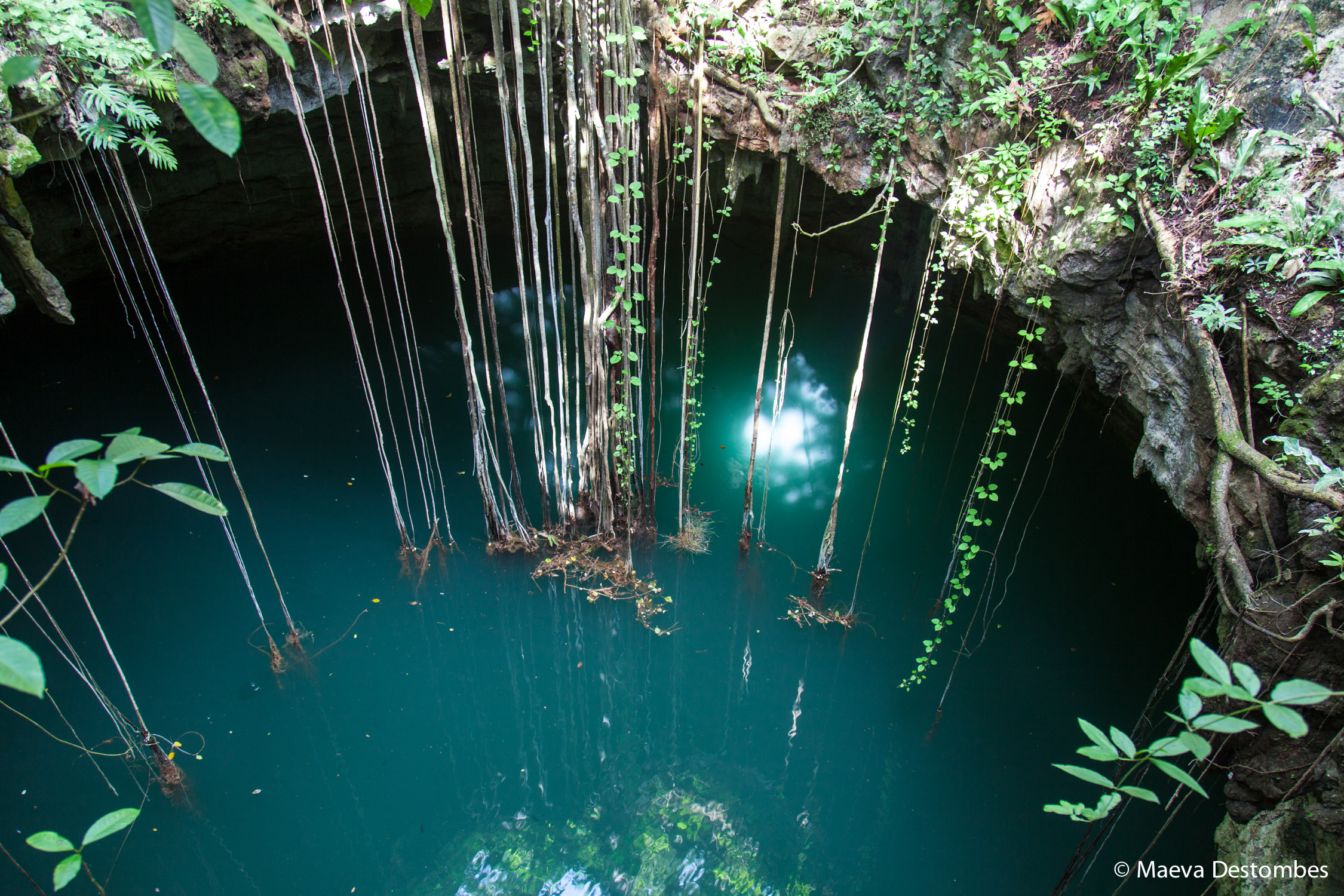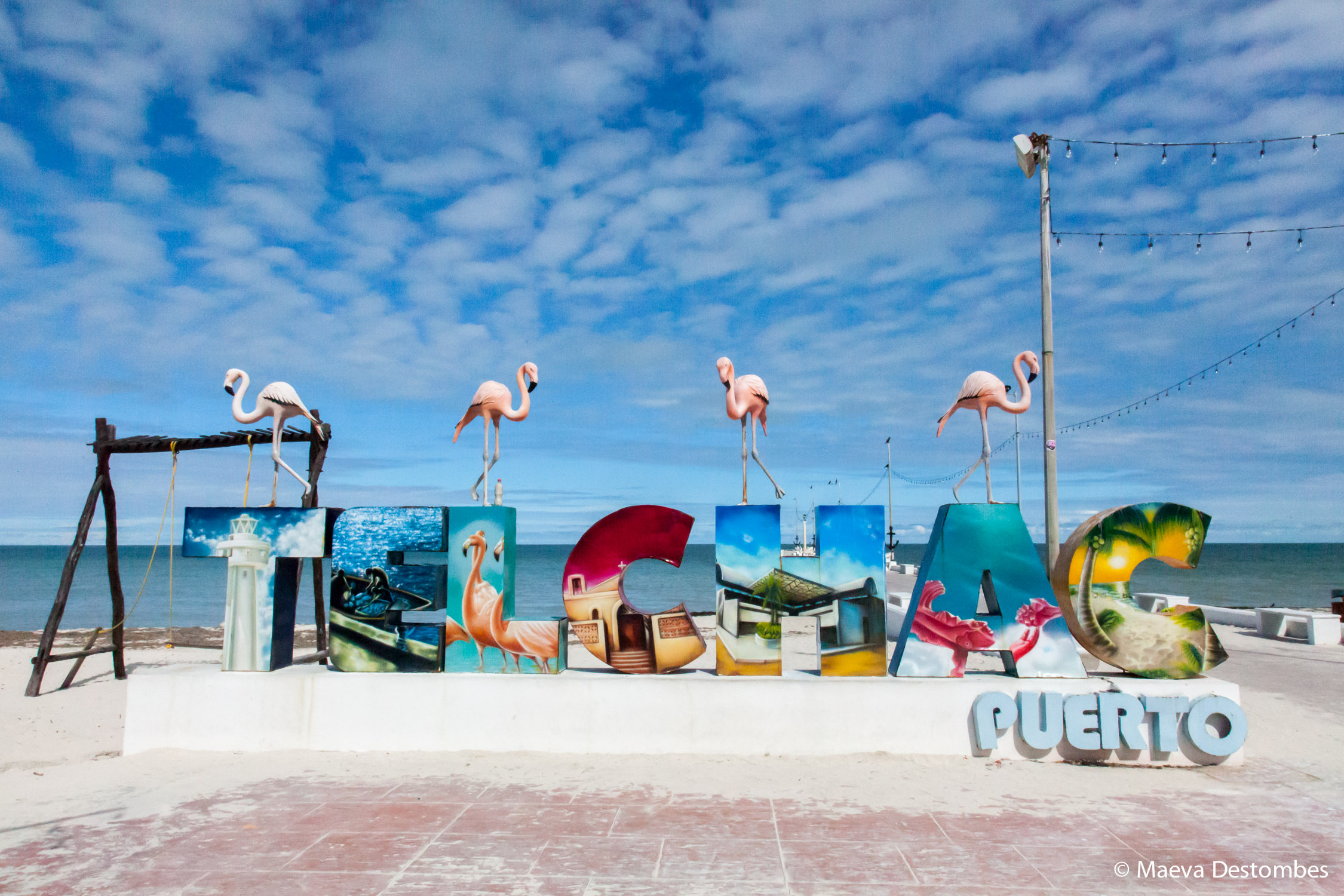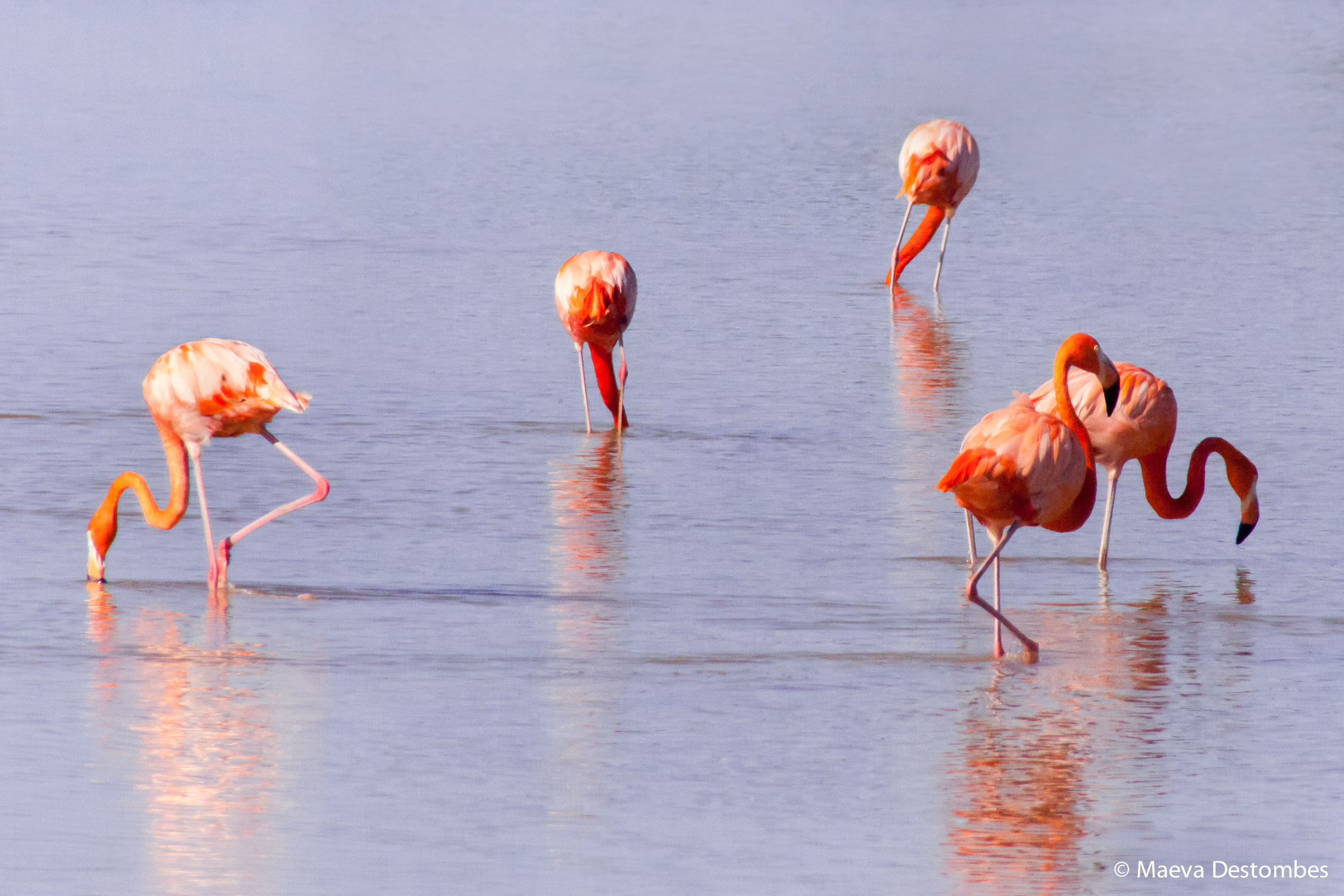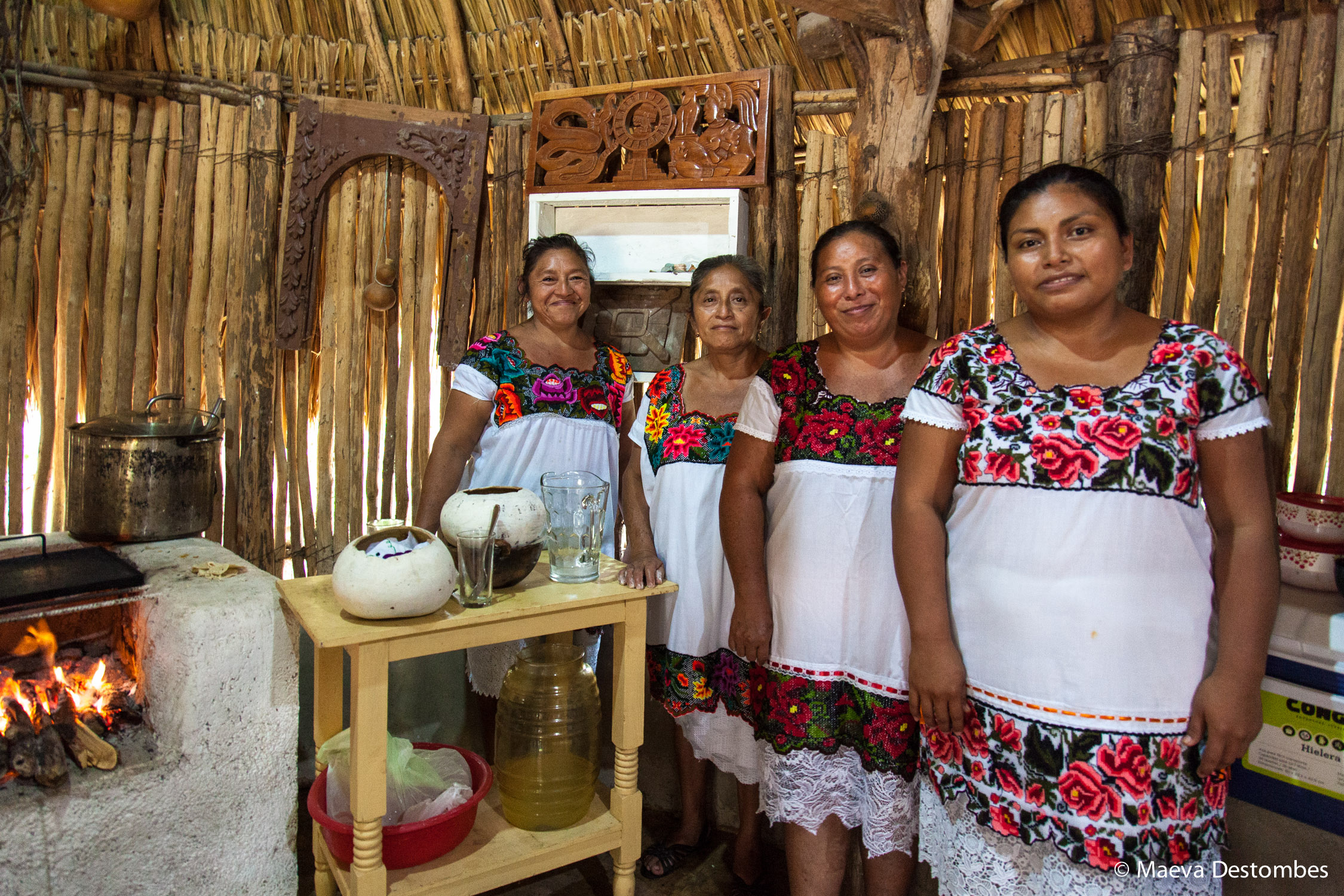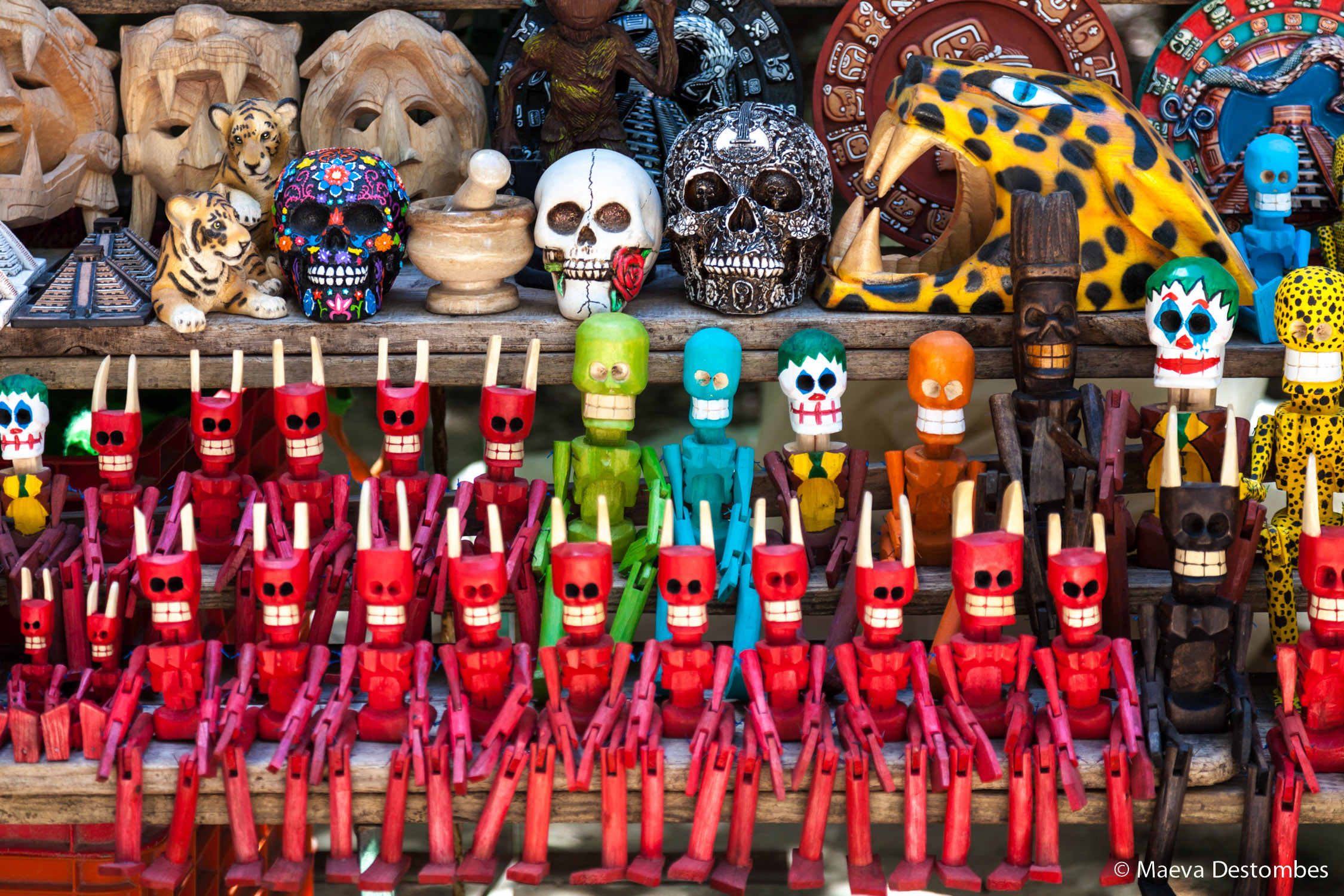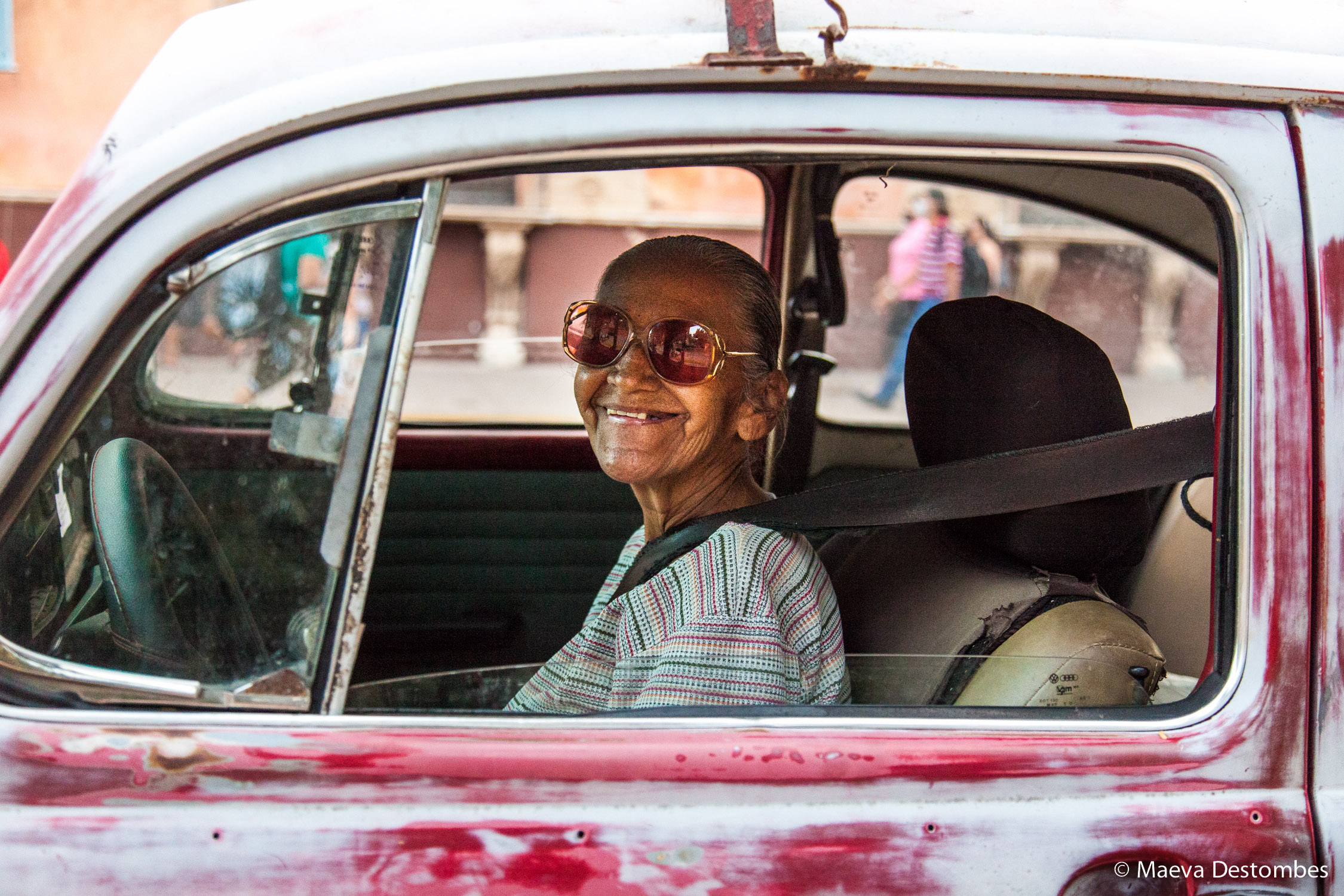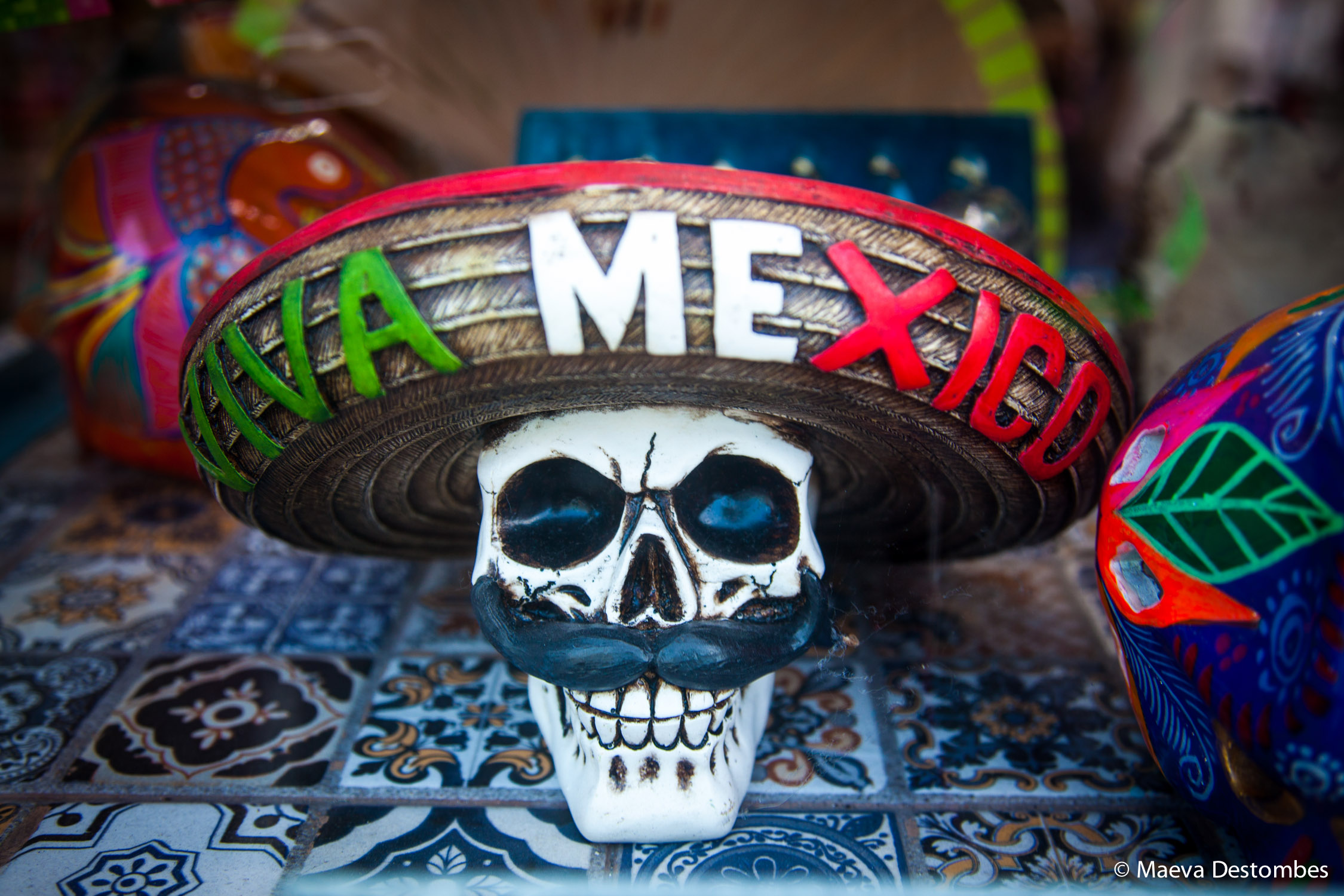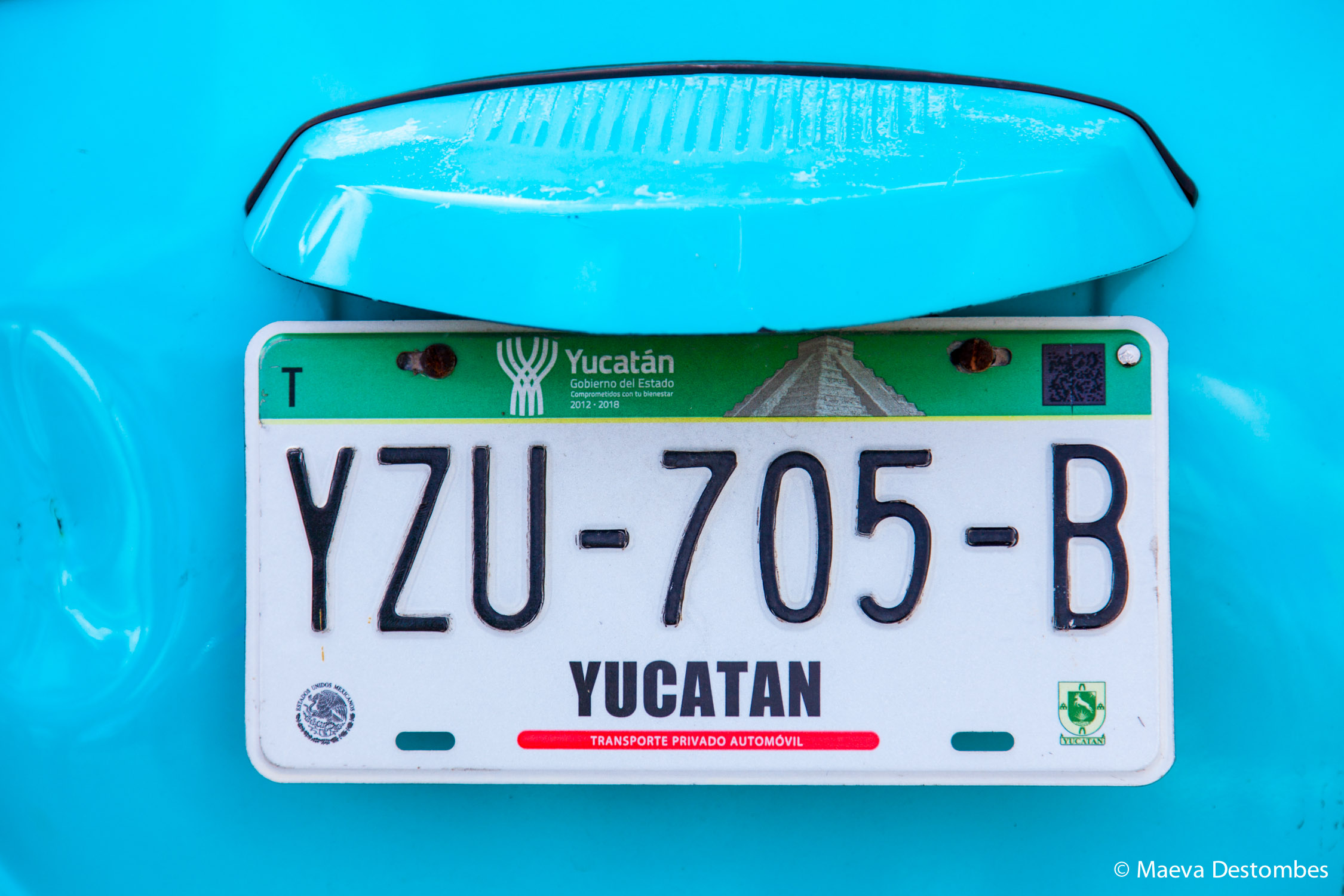
Tourism has undoubtedly been the area most affected by the Covid health crisis. Destinations have had to reinvent themselves. The Yucatán was no exception. Mérida, its capital, has been chosen in 2021 to be the seat of the tourism renaissance through its annual Tianguis Turístico México fair, which had not been held for two years. This is an opportunity for the region to showcase all its unique and little-known treasures.
Yucatán is colour! A slogan that has never been so well carried as by Mexico’s best-known region, often confused with the eponymous peninsula that encompasses Yucatán, Quintana Roo and Campeche. More broadly, Tabasco and Chiapas can be counted among the states of this peninsula. And indeed, colour is omnipresent in the Yucatán… Here, there are no mountains, no large lakes, no rivers… But its nature, its cities, its sites have a range of tones that would make a Gauguin or a Matisse jealous, so rich and of an incredible amplitude.
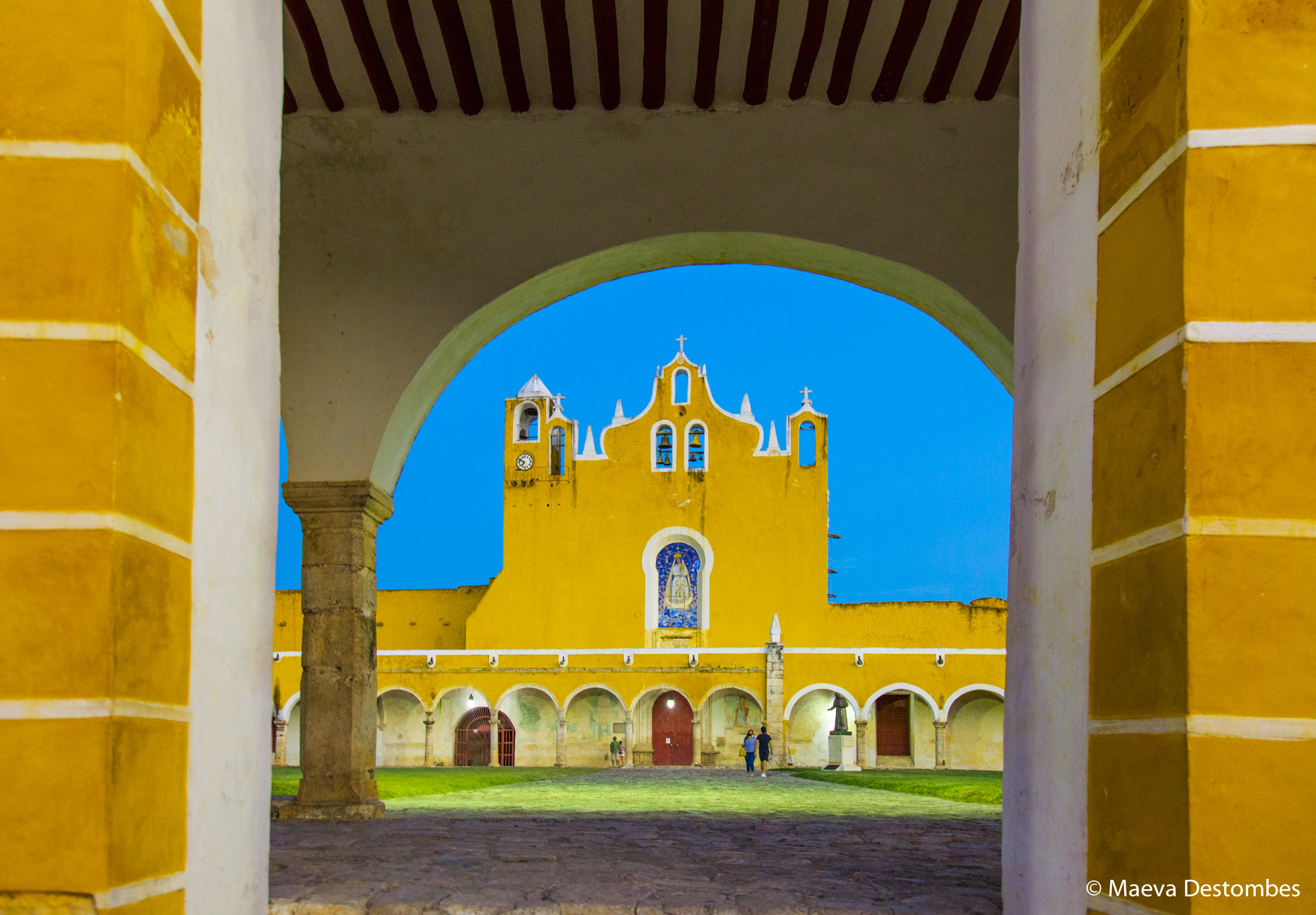
IZAMAL, THE YELLOW CITY OF YUCATÁN
Golden yellow is certainly the most emblematic colour of the region. Izamal, known as the yellow city, is its most symbolic representation, but not the only one. In the heart of the city, undetectable at first glance, two pre-Columbian structures attest to the importance of the site in the pre-Columbian Mayan civilization. The yellow of the walls, a solar colour if ever there was one, is perhaps a visual representation of the sun god K’inich Ajaw, to whom the city was dedicated. A little further north, in the direction of Merida, in Yaxchopoil, all the young people of the village are busy repainting the facades of the houses overlooking the main square with this intense colour. The following week, the villagers will celebrate the anniversary of the town’s creation. And a big party will be held there with all the notables of the area. For the photos and videos that will be shot there, everything must be perfect! This small village is known for its hacienda, which, hidden behind ruins, is a beauty.
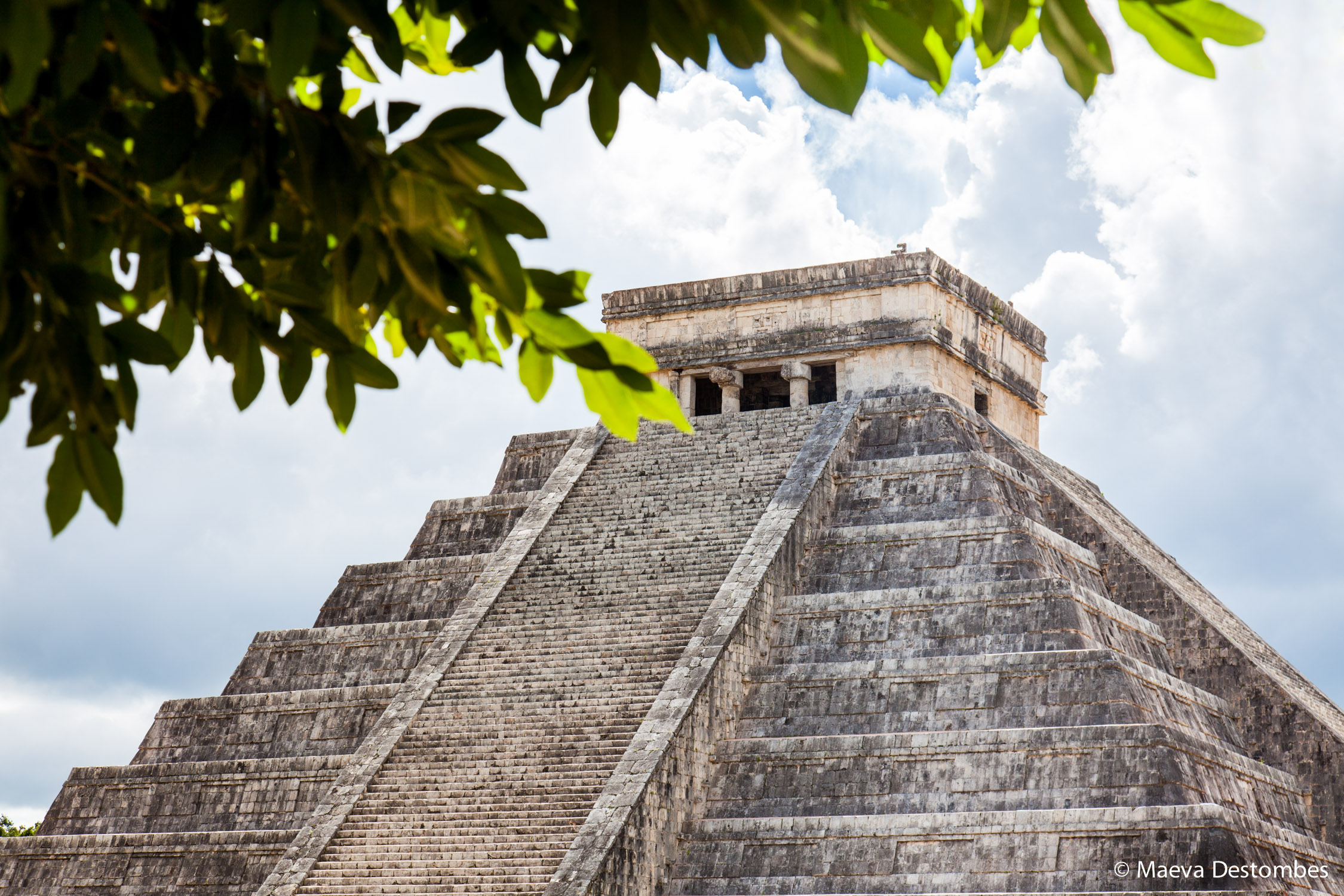
CHICHÉN ITZÁ, ONE OF THE NEW 7 WONDERS OF THE WORLD
Another colour that symbolises the region is grey. Natural », as Yucatán prefers to call it, is the colour of Mayan buildings. Located between Valladolid and Mérida, Chichén Itzá, the best known, classified as a Unesco World Heritage Site since 1988 and elected as one of the seven new wonders of the world, is a must-see on a visit to the Yucatán, but perhaps not always the most pleasant to visit. Very crowded, even in Covid season. Not always the most friendly welcome. Chichén Itzá was certainly the most important religious centre in the 10th century. But the first traces of occupation and construction of the place date from the 8th or 9th century AD. The most important building on the site is the square-based terraced pyramid that stands in the centre of a huge plot of land. Nicknamed El Castillo by the Spanish conquistadors, it rises to a height of 24 metres. Impressive but not the highest in the region. The one in Uxmal exceeds it by 16 metres… The presence of numerous cenotes in the vicinity would have given it its name since Chi means mouth and Chen, well. Water was indeed of capital importance, a treasure of nature, in this very dry region.
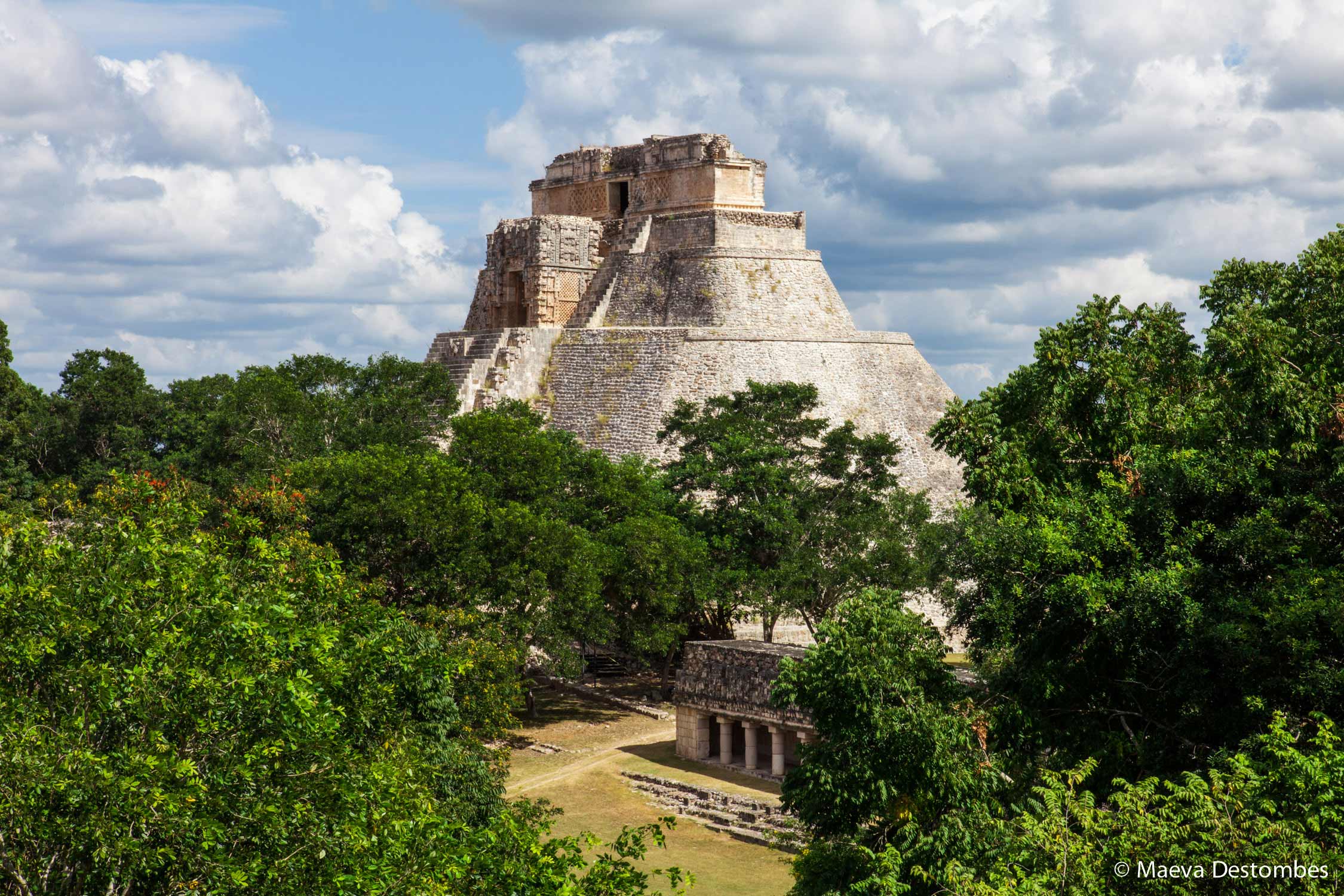
UXMAL, THE ARCHAEOLOGICAL PEARL OF THE YUCATÁN
Other archaeological sites, perhaps less famous, are well worth a visit. Uxmal, a Unesco World Heritage Site since 1996, 78 kilometres south of Mérida, is an ancient Mayan city, both classical (1st millennium AD) and post-classical (Maya-Toltec period between 900 and 1200 AD). It is a beautiful city, and many people prefer it to Chichén Itzá. Its name means « three times built » in the Mayan language. The site, of incredible beauty, can be seen from the top of a « pyramid », the governor’s palace. The Pyramid of the Soothsayer, is of an « unusual » shape for the average person and is known for that. Its levels are oval and not rectangular or square like most pyramids in the Yucatán. The architecture of the Pyramid of the Soothsayer is in fact typical of the area, called Puuc, in the northwest of the peninsula. This land – the most fertile in the Maya territory despite a drier climate, xerophilous vegetation and water tables 65 metres below ground – led to the construction of underground cisterns, the chultuns, but also to a Puuc style where the facades are bare on the lower level and more elaborate on the upper level. The Puuc style also uses the Mayan corbelled vault and columns thanks to the predominance of geometric decoration on the façade. Other characteristics of this style are present in Uxmal such as the mask of Tlaloc, the feathered snakes, the bas-reliefs decorated with skulls and intertwined bones…
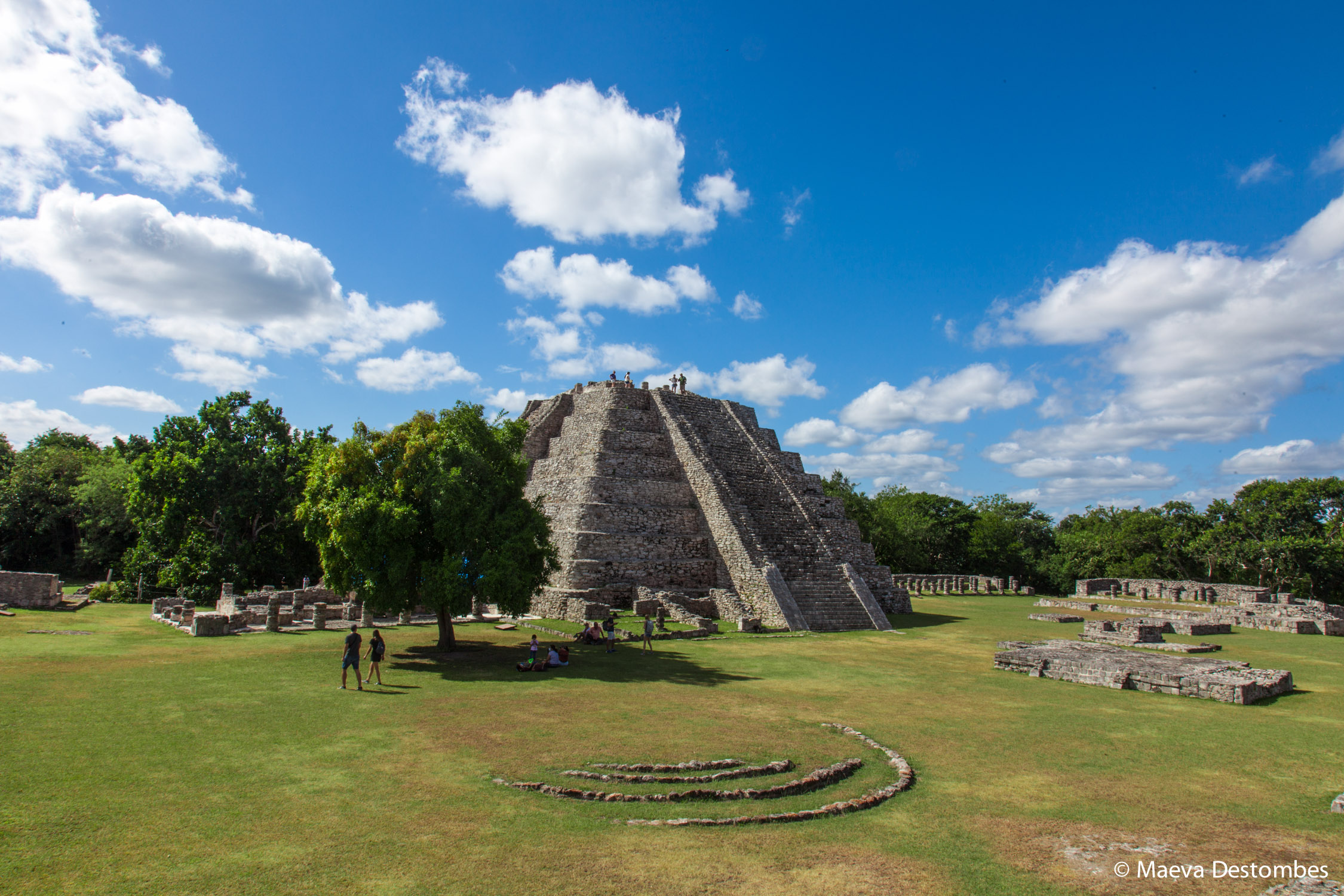
MAYAPÁN, XCAMBO, THE TRANQUILITY OF MAYAN TEMPLES
Mayapán, which means « banner of the Maya people », about 40 km south of Mérida, was the Maya political capital for about 220 years between the 13th and 15th centuries. After a revolt against the Maya-Toltec lords of Chichén Itzá, the Maya built a new city inside a defensive wall. A king was appointed, and each noble family sent members to sit in the government of Mayapán. In 1441, a revolt led to the looting, destruction and abandonment of the city. Smaller, less extensive, less impressive than Chichén Itzá or Uxmal, Mayapán is nevertheless quieter, more intimate. And it is possible to climb the main pyramid, unlike the other two famous sites. 60 steps higher and a 360-degree view is revealed to the most courageous. If the climb is easy, the descent is much less easy…
Totally alone in the world? It is possible in Xcambó! The site is so little known, so isolated, that there are really no crowds to visit it. Even if its surface is quite small, the charm of this site lies precisely in its isolation. Xcambó dates from the early classical period, from 250 to 600 AD. Elements of Peten (Guatemalan) and Puuc influence are visible, notably rounded corners and stucco masks. The pyramid is only 11 meters high but allows a nice view on the small chapel (which lost its palm roof) dating from the last century built on the Mayan ruins and dedicated to the cult of a virgin.
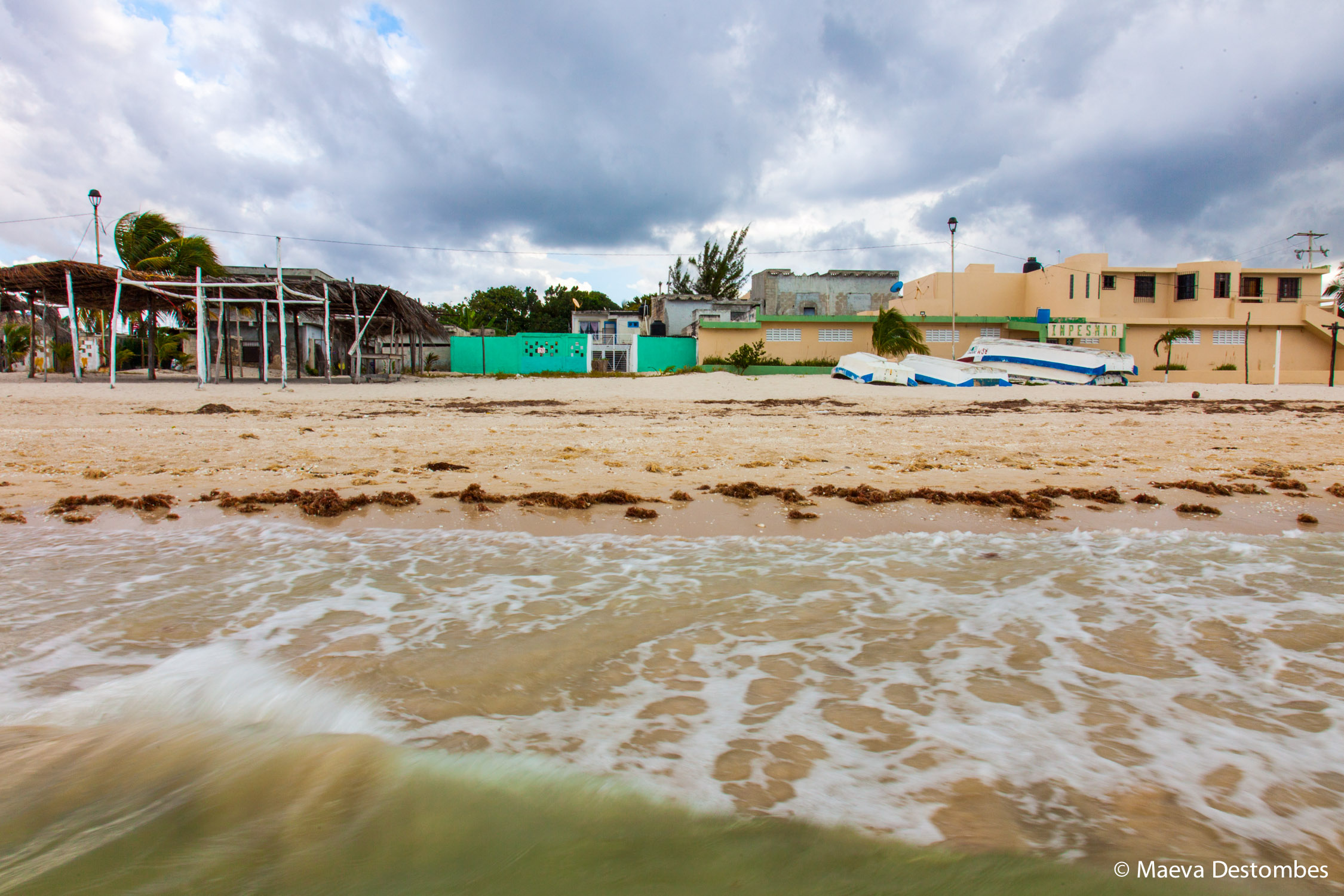
YUCATÁN, AN EXUBERANT AND OPULENT NATURE
There is only one step from blue to green. The two colours sometimes mix to become one. Revealing a nature with a thousand possibilities. Blue and its variants are omnipresent in the Yucatán. The blue of the sky. Easy for a region where temperatures oscillate between 15 and 40 degrees depending on the time of day and the period. The sunshine is at its maximum with 250 hours of sunshine in some months like May. Blue like the sea. Celestún, located 90 km west of Mérida, is a natural reserve classified as a biosphere reserve by UNESCO, where between 300 and 400 species of migratory birds have been identified, including the famous pink flamingos. If this ecosystem bordering the Gulf of Mexico is better known for the green of its mangrove made up of an incredible quantity of plants and the pink notably of its birds of the Phoenicopteridae family, the blue also holds a great place there. Its beaches, less known than those of Progreso or Sisal, are a cameo of turquoise, cyan, azure and aquamarine. A palette that changes according to the clouds that fly over it. Other beaches such as Telchac, halfway between Progreso and Dzilam de Bravo, or San Crisanto add to the list of the most beautiful beaches in the Yucatán, always with these sublime shades of blue.
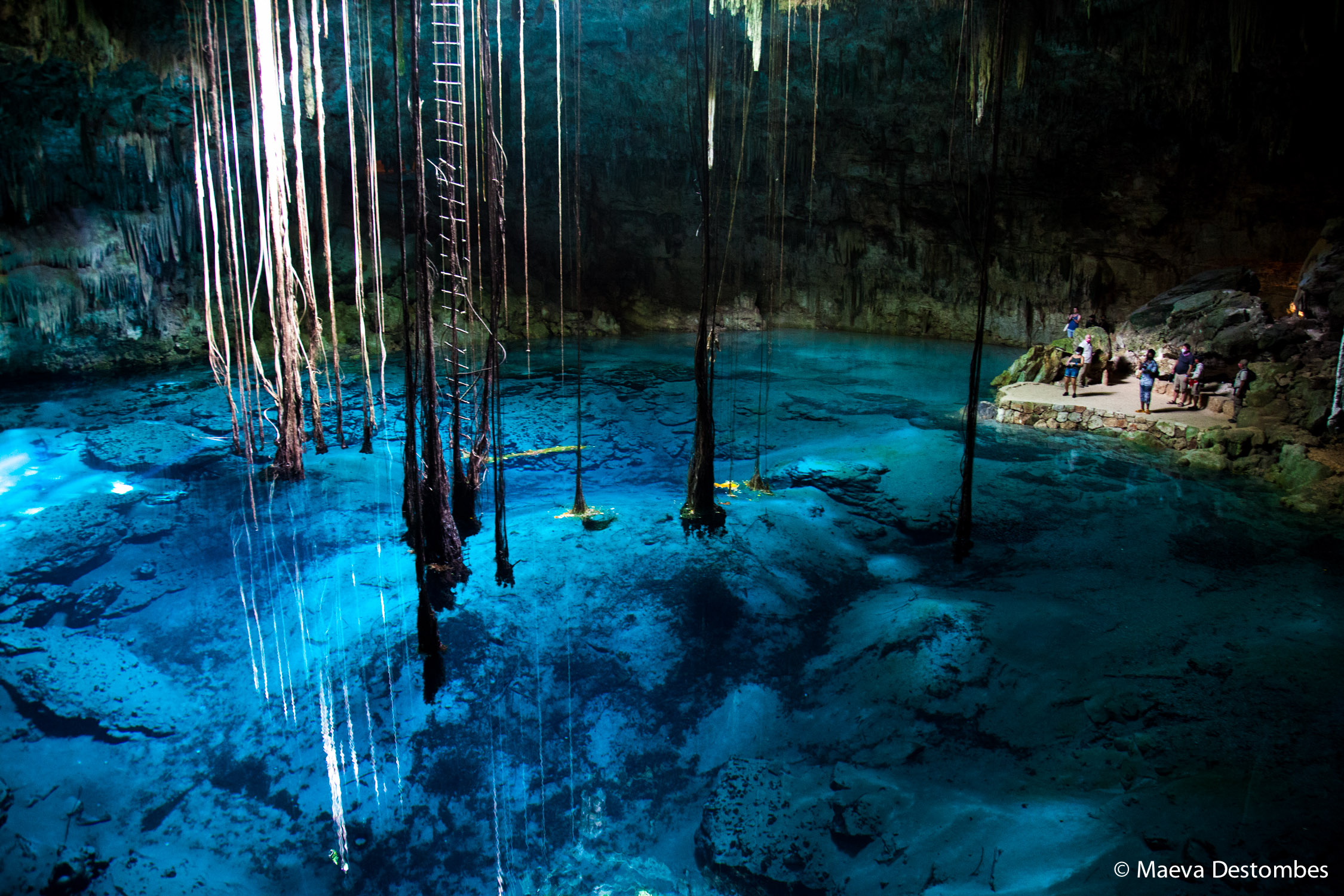
THE CENOTES, SOURCES OF LIFE FOR THE ANCIENT MAYA
Blue – deeper – and green mark the cenotes, a specificity of the region. There are more than 10,000 of them in the Yucatán Peninsula, but only a quarter of them have been studied and mapped. Called blue holes, these chasms, totally or partially filled with water, are a delight for all swimmers, whether experienced or novice. Some of them can be tens or even hundreds of metres deep. In Mexico, the deepest known cenote is Zacatón, in the north-east of the country, which reaches 339 metres. The ancient Maya believed that they were sacred and that they communicated with the underworld. Most of them are filled with fresh water, but some communicate with the sea and can contain fresh water on the surface and sea water at depth. At the beginning of June 2022, a « new » cenote near Valladolid will be accessible to tourists. Xibalbá (Reserva de Xibalbá by Xcaret), owned by the Xcaret Group, whose name in Mayan means « the underworld ruled by the gods of Death and Disease », has a surface area of 154 hectares, of which 50 hectares are reserved exclusively for tourists and another 50 hectares for the conservation of local flora. The site offers many attractions including a Mayan craft village, a zip line, a restaurant, a stone cathedral and a 5km, 2-hour minimum walking and train ride through eight extraordinarily beautiful cenotes. Xibalbá will have a capacity of 2000 people per day, managed by 150 full-time and 600 seasonal staff. Entrance to a cenote costs between 30 pesos and 500 pesos.
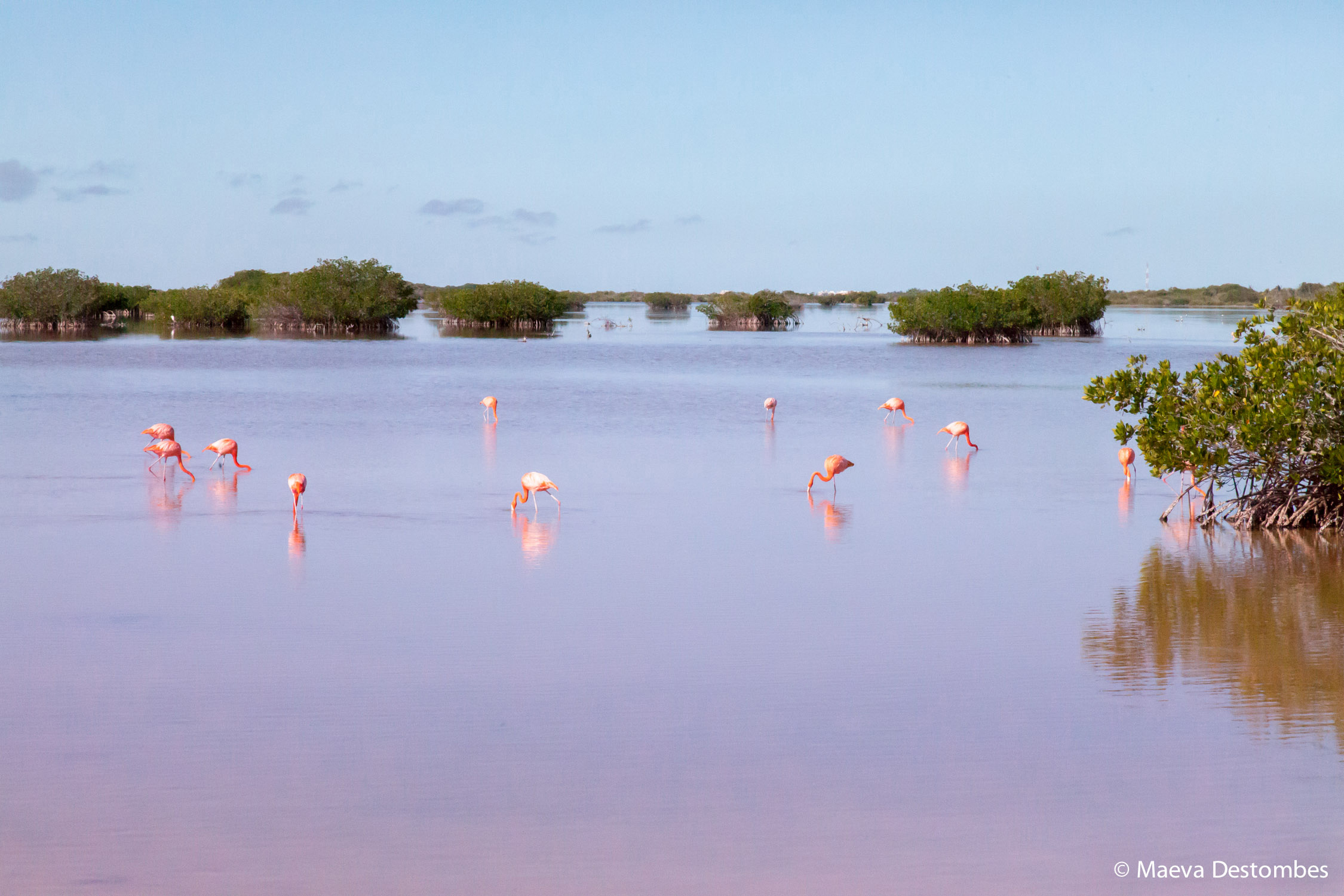
YUCATÁN, ALL ROSES ARE IN NATURE
Pink is everywhere in the Yucatán. Whether it is in the colour of the houses, in the plumage of the pink flamingos or in the delicacy and calm of the salt marshes full of artemia (Artemia Salina) which the birds enjoy and Dunaliella Salina, an alga loaded with carotene and producing a pink to red tint which the artemia feed on… The most visited and photographed are undoubtedly Las Coloradas, 233km from Mérida on route 176 and about 20km from the village of Río Lagartos. It takes between 3 and 4 hours to get there from the capital of Yucatán. The months of February to August, especially May and June, before the rainy season, are ideal for visiting, as they are among the hottest of the year and also the sunniest. During these hot periods, the sun allows the water to evaporate and its reflection on the water enhances the colour of the ponds by making it more intense, especially when the sun is at its zenith (between 12 and 3pm). These salt pans also have the advantage of having pink lagoons and salt mirrors in one place. Closer to Merida, San Crisanto, a small town of 1,000 inhabitants, also has its salt pans. These « Salineras de San Crisanto » cannot be visited as they have recently been « privatised ». Close to the Sinanché-Xitibcanul road, they can be seen and photographed without entering. A little further east, after Telchac Puerto in the direction of Progreso, on the Dzemul-Xtampú road, small salt pans have been restored by the « Meya’h Ta’Ab » cooperative. The entrance costs 20 pesos. The fishermen extract the salt by hand and sell their production at the entrance of the site. These salt pans are located in the middle of a lake called Laguna Rosada, where visitors can observe the tranquility of the flamingos. There are also several small salt pans (at least four) in Celestún that are not easily accessible by SUV.
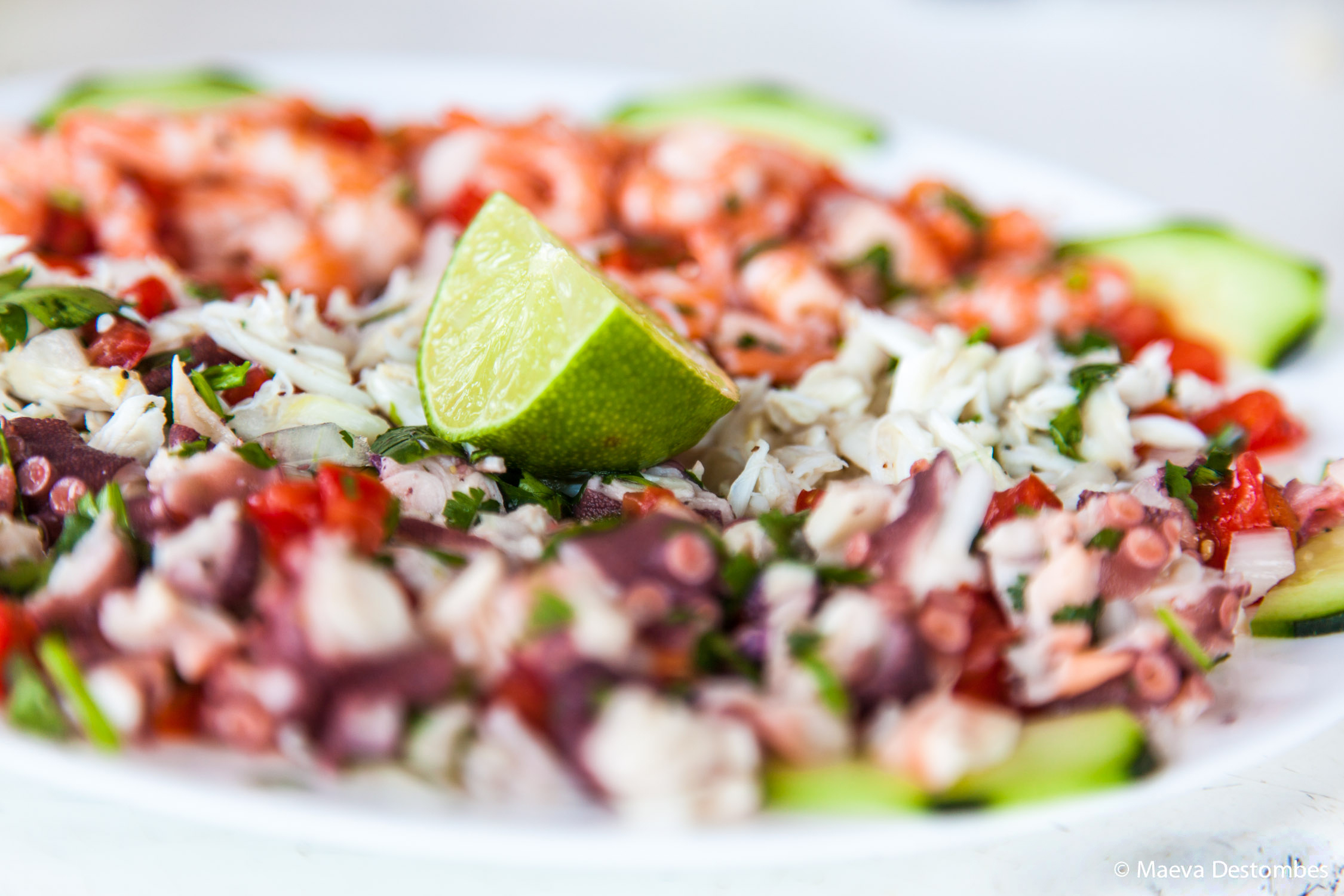
PRACTICAL NOTEBOOK OF YUCATÁN
GETTING THERE Aeroméxico Aerovías de México is the national airline of Mexico. Its slogan is « La línea aérea más puntual del mundo ». It offers almost 600 daily flights in Mexico, North and South America, the Caribbean, Europe and Asia. It serves Merida via Mexico City.
ACCOMMODATION Hampton Inn, Calle 20-A 288, entre 5-A, Xcumpich, 97204 Mérida, Yucatán. Telephone: +52 999 964 2345. Hacienda Xcanatún by Angsana, Calle 20 S/N x 19 y 19A Comisaría Xcanatún, 97302 Mérida, Yuc. Telephone: +52 999 930 2140. Hacienda Xtepén, Comisaría de, Tab. Cat. 3493 Hda Comisaría Xtepén Yuc MX, 97390 Xtepén, Yuc. Telephone: +52 999 924 4642. Hacienda Santa Cruz Merida, C. 86 S/N, Santa Cruz Palomeque, 97315 Mérida, Yuc. Telephone: +52 999 611 9233. Hacienda Museo Yaxcopoil, Carretera Federal 261, Calle 21 No.500-Kilómetro 220, 97396 Yaxcopoil, Yuc. Telephone: +52 999 900 1193. The Lodge at Uxmal, KM.78, Antigua Carretera Merida Yuc MX, 97890 Uxmal, Camp, Mexico. Phone: +52 998 887 2495.
WHERE TO EAT? Picheta Restaurant, C. 61 501, Centro, 97000 Ejido del Centro, Yuc. Phone: +52 999 506 0339. Ppapp Hol Chac de Uxmal, Km. 10, México 261, 97840 Uxmal, Yuc. Phone: +52 997 973 7912. Pueblo Pibil en Tixkokob, Calle 21 & 28, Nº 180, Centro, 97470 Tixkokob, Yuc. Telephone: +52 991 611 0805. Teya, Calle 60 #346 interior Paseo 60, Zona Paseo Montejo, Centro, 97000 Mérida, Yuc. Telephone: +52 999 948 8242. Kokomo Beach Club, km 30 Carretera Chicxulub – Telchac, San Bruno, 97404 Progreso, Yuc. Telephone: +52 999 268 4687. Hacienda Teya, Merida – Peto, Hacienda, 97370 Teya, Yuc. Phone: +52 999 429 2431.
WHAT TO VISIT? Cenote San Ignacio, C. 23 126, Centro, 97816 Chocholá, Yuc. Phone: +52 999 278 6294. Cenote Hacienda Mucuyche, 97825 Mucuyché, Yucatan, Mexico. Phone: +52 999 547 6087. Cenote Lol-Ha, 97924 Yaxuna, Yucatan, Mexico. Reserva de Xibalbá by Xcaret, R2GJ+33 X-Cohuó, Yucatán, Mexico. San Antonio Mulix, Yucatán, Mexico. ATV Tour Izamal, Calle 5-B No. 293 por 60 Planta Alta,Revolución, 97118 Mérida, Yucatán. Telephone: +52 999 930 3760. Choco-Story, Antigua, Calle 10 Carretera Merida Campeche Km. 78, 97899 Uxmal, Yuc. Phone: +52 999 289 9914.
